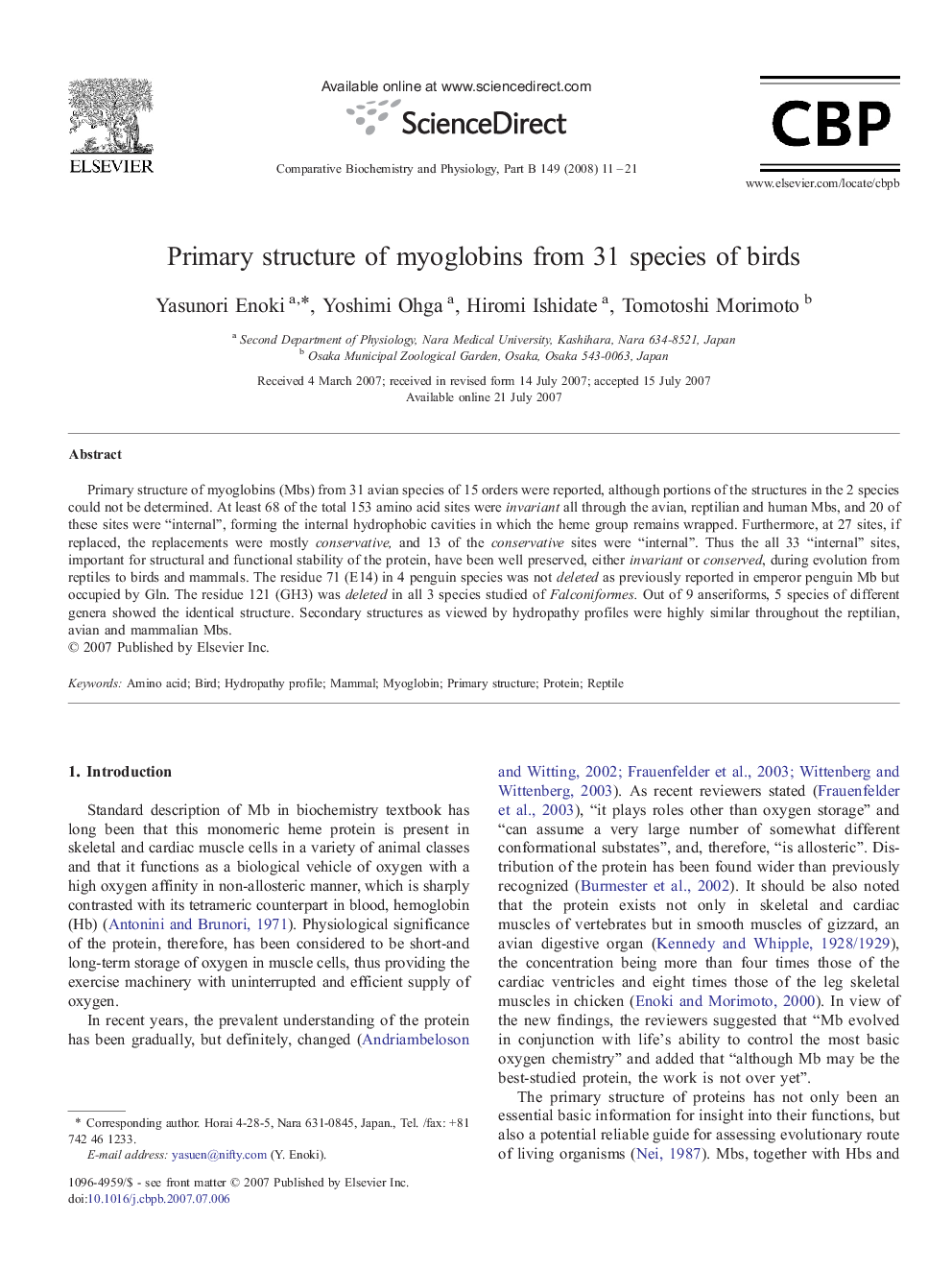| Article ID | Journal | Published Year | Pages | File Type |
|---|---|---|---|---|
| 1976496 | Comparative Biochemistry and Physiology Part B: Biochemistry and Molecular Biology | 2008 | 11 Pages |
Primary structure of myoglobins (Mbs) from 31 avian species of 15 orders were reported, although portions of the structures in the 2 species could not be determined. At least 68 of the total 153 amino acid sites were invariant all through the avian, reptilian and human Mbs, and 20 of these sites were “internal”, forming the internal hydrophobic cavities in which the heme group remains wrapped. Furthermore, at 27 sites, if replaced, the replacements were mostly conservative, and 13 of the conservative sites were “internal”. Thus the all 33 “internal” sites, important for structural and functional stability of the protein, have been well preserved, either invariant or conserved, during evolution from reptiles to birds and mammals. The residue 71 (E14) in 4 penguin species was not deleted as previously reported in emperor penguin Mb but occupied by Gln. The residue 121 (GH3) was deleted in all 3 species studied of Falconiformes. Out of 9 anseriforms, 5 species of different genera showed the identical structure. Secondary structures as viewed by hydropathy profiles were highly similar throughout the reptilian, avian and mammalian Mbs.
